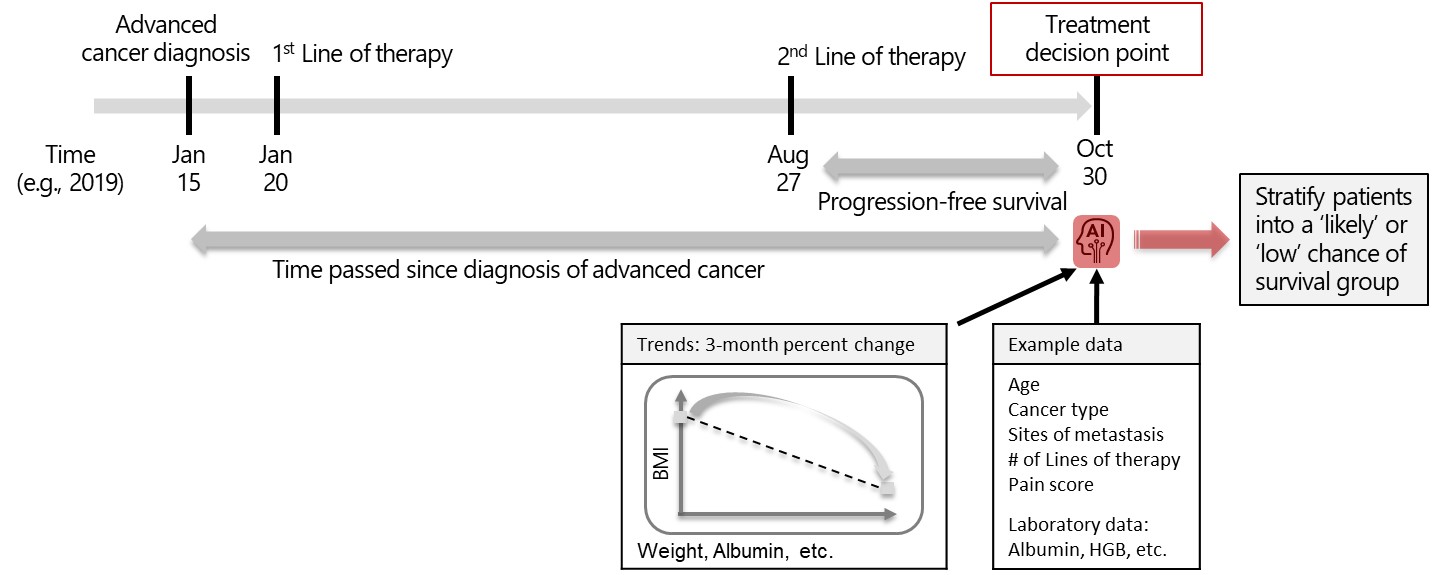24 March 2023

George Chalkidis, PhD
Research & Development Group
Hitachi, Ltd.
Patients with incurable advanced cancer should have access to high-value, compassionate care with a focus on improving quality of life, as aggressive treatments may have limited ability to meaningfully extend life at this stage and may cause more harm than help.
Can technology solutions improve end-of-life care to avoid unplanned hospitalizations and maximize use of supportive care? To seek out answers, my colleagues and I at Hitachi R&D partnered with the University of Utah and Huntsman Cancer Institute. Our diverse, interprofessional team of experts included an oncologist and palliative care physician, a clinical pharmacist, nursing, and data scientists. We started by mapping out the clinical process around care nearing the end of life, trying to understand how machine learning could improve patient support at this stage.
During our research, we identified a clinical use case in which machine learning integrated into the clinical workflow might lead to the delivery of higher value care. Having a conversation about goals of care when approaching end-of-life is a difficult process for both patients and providers. However, studies have shown the benefit of estimating an accurate prognosis; providers refer patients earlier to supportive care and patients are less likely to pursue aggressive treatments that are unlikely to extend life. Our efforts focused on a data-driven personalized prognosis tool based on machine learning to help both patients and providers choose the next step through shared decision-making.
We wanted our tool to empower patients by helping them understand what their future with cancer may look like and make treatment decisions based on their goals. Therefore, we decided the best clinical use case of the tool to be in an outpatient setting at a treatment decision point when patients and providers discuss treatment options. We trained a machine learning model using electronic health record data available during a patient’s visit to predict the six-month prognosis if a new line of therapy were to be started.
Our goal was to identify patients with either a ‘likely’ or ‘low’ chance of survival that is consistent with the mental model of clinical experts on the team. Consequently, we adjusted the machine learning model to mimic the minds of clinical experts so that, of the patients reported to have a ‘low’ chance of survival, in fact, only one out of three would be alive in six months.
To maximize portability using the FHIR standard and support trust in a user interface of the tool, our team reduced the input feature set to 45. We analyzed each feature’s prognostic importance with Shapley additive explanations and only included features of clinical relevance in the model which are structured and expected to be FHIR compatible. Our final model uses a patient’s cancer type, current line of treatment, past treatment history, demographic information, and lab values to predict whether the patient has a ‘likely’ or ‘low’ chance of surviving six months into the future as shown in Figure 1.

Figure 1. Machine learning model uses readily available features to stratify patients into ‘likely or ‘low’ chance of survival at treatment decision points.
One day, our study may lead to transforming end-of-life care by helping patients and providers choose a care path tailored to the patient’s wishes through shared decision-making.[1]
In an ‘Ask an expert’ interview, our colleagues at University of Utah and Huntsman Cancer Institute explain how our technology empowers patients with advanced cancer to plan for end-of-life care.[2]
I would like to thank the team for making this work possible: Catherine Staes, Jordan McPherson, Anna Beck, Michael Newman, Kensaku Kawamoto, Hideyuki Ban, Shinji Tarumi, Wataru Takeuchi, and Shuntaro Yui.